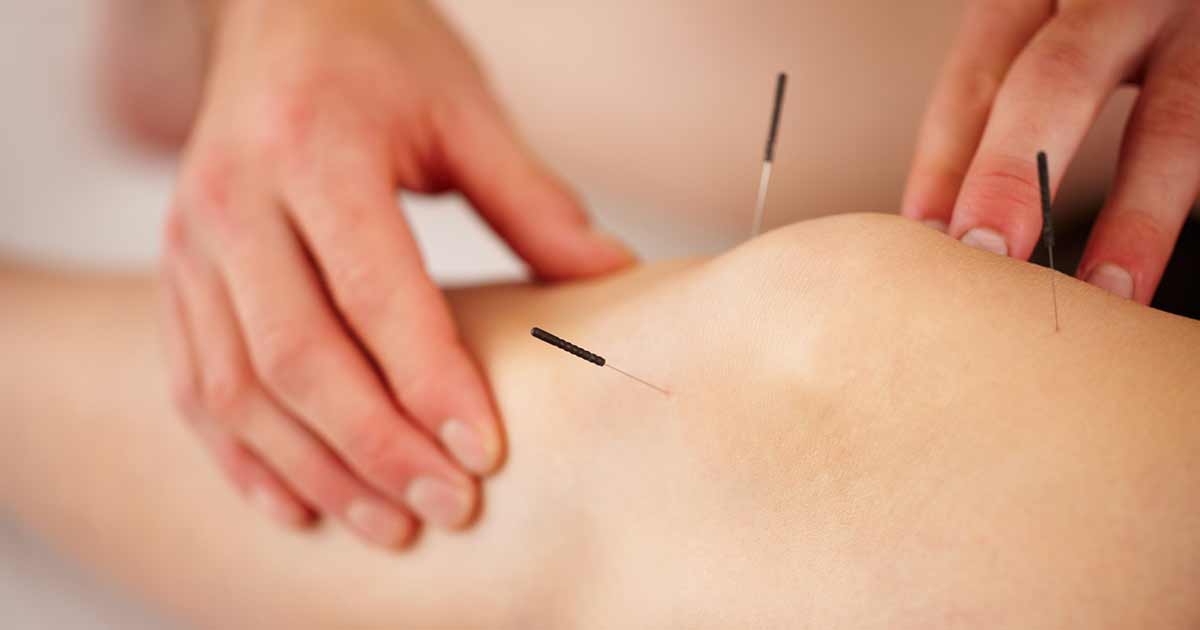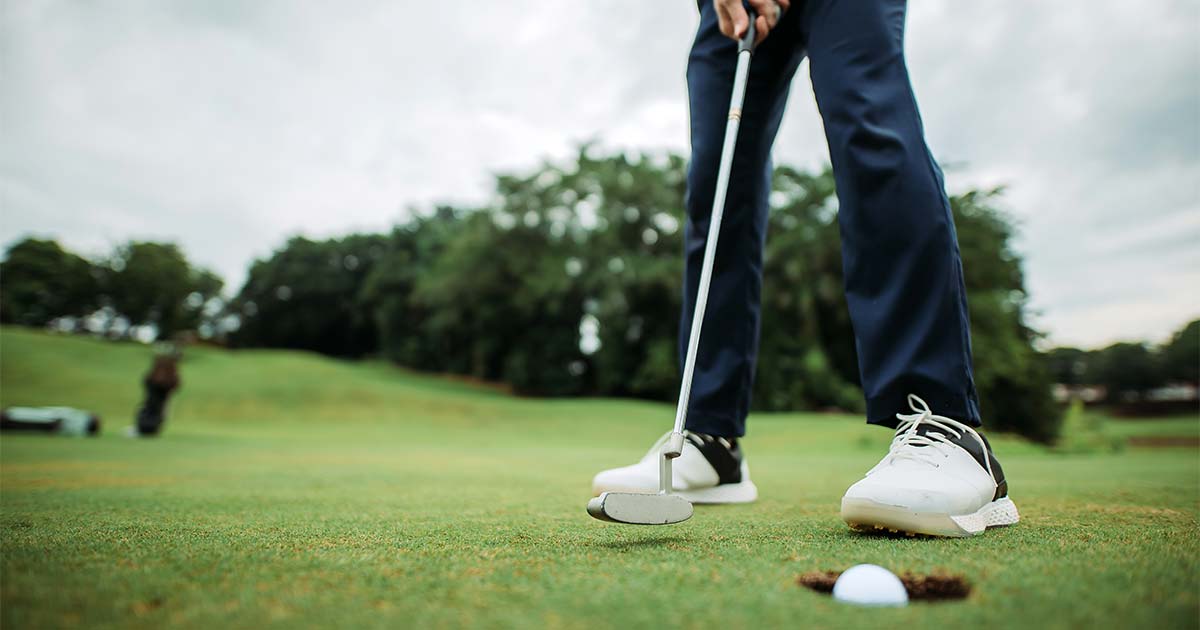
Advice to improve your movement, fitness, and overall health from the #1 in orthopedics in the U.S.
Simple Back Stretches for Golfers
Golfing involves a lot of strenuous motion that can put serious stress on the lower back. HSS exercise physiologist Jamie Osmak offers advice and stretches to help you avoid it.
Advice to improve your movement, fitness, and overall health from the #1 in orthopedics in the U.S.
As anyone who’s swung a club knows, golf can be a wonderful sport. “I love golf beyond belief,” says Jamie Osmak, CSCS, USATF, CGFI-1, an exercise physiologist at HSS Sports Rehabilitation and Performance West Side and HSS Paramus. “The benefits of golf are social engagement, getting fresh air, and movement — if you skip the cart, you may walk between six and eight miles. Plus, the challenge of it is a pleasure.”

But like many sports, golf involves repetitive movements, which can stress your body and lead to injury and pain. Back discomfort is particularly common in golfers. “Because of the asymmetrical twisting pattern of the golf swing, golfing can put a significant amount of compressive pressure on the spine,” Osmak says. “This can potentially lead to injury.”
If you’re experiencing the onset of lower back pain directly associated with golfing, you may need to take a break. “If you have an uptick of pain after golf that doesn’t resolve in a few days, get an evaluation for an idea of what’s going on,” he says. But if what you’re feeling after a round of golf is just normal stiffness or soreness, the suggestions below may help you avoid it in the future.
Causes of Back Pain from Golfing
Though golf may be considered by many to be a relaxed activity, it actually involves a lot of strenuous motion. “A golf swing is a power movement,” Osmak says. “You’re hitting the ball with a driver as hard and fast as you can. There’s a lot of load going through you and your spine — about eight times your body weight in force.”
The rotational aspect of the golf swing also plays a key role in lower-back strain. Some parts of your body should rotate when you swing, like your ankles, hips, and upper (thoracic) spine. However, your lower (lumbar) spine should not rotate.
Some of the strain could be attributed to poor kinetic linking, in which the force from your lower extremities transfers to your upper extremities through your small core muscles. “Think of your golf swing as an athletic movement,” Osmak says. “A proper warm up and strength program can allow for better kinetic linking and athletic sequencing in the golf swing. Learning how to use your lower body while maintaining a stable core is key in transferring speed to the club head.”
How to Avoid Back Pain from Your Golf Swing
Maintaining correct form is the best defense against golf-related lower back pain. Osmak recommends lessons and tutorials to ensure you’re hitting the ball correctly, but he also has general advice for protecting your lumbar spine from injury.
“You want to rotate at your ankles, hips and thoracic spine,” Osmak says. “If you can move at those points more efficiently, you’ll reduce the stress on the lumbar spine.”
By stabilizing your lumbar spine, you’ll actually be able to hit the ball farther. “With a strong and stable core, you’ll have more kinetic energy — a more efficient transfer of force up the chain from your lower to upper body, from the digging in of your spikes in the ground to the transfer of power and speed to your club.”
Stretches to Do Before Golfing
Another important step in preventing lower back issues related to golfing is to stretch. Osmak recommends stretching throughout the day, as well as before and after playing a round. To reduce rotation and strain in your lower spine, focus on increasing the range of motion in your upper spine as well as in your hips. “Increased extension, flexion and rotation of the hips and thoracic spine helps spare the lower spine from rotating,” Osmak says.
Before stretching, warm up with some light cardio if possible. “It would be great if you have access to a stationary bike,” Osmak says, “or take a brisk walk to the driving range to warm up your body.”
Then move on to some soft-tissue work, either by foam rolling or using a massage gun. “Think of it as a reset button for the fascial tissue in the muscles surrounding your hips and knees, which can increase your range of motion and allow you to stretch more deeply,” Osmak says. Work on the front of the thighs, then the outside of the thighs and glutes, followed by foam rolling the thoracic spine.
Next, stretch out your hips, followed by a final stretch for your thoracic spine. Osmak recommends these three moves.
Hip hug stretch
- Start by sitting with one leg straight out in front of you and your other knee bent to a 90-degree angle. Move your bent leg to the outside of your straight leg so that your knee is crossed over the top.
- Grab the bent knee with your opposite arm and pull towards your chest.
- Focus on keeping your chest up. You should feel the stretch in the back of your glute.
- Hold for 30 seconds, then switch sides.
Corner-assisted half-kneeling hip flexor stretch
- Start by kneeling at the corner of a wall or pillar with one knee on a pad, towel or blanket at your side.
- Lightly push your back into the wall, flattening your lower back by squeezing your abdominal and glute muscles.
- Hold for 20 to 30 seconds.
- Switch sides and repeat.
“The lower back should be pressed into the wall and glute tight to feel the stretch in the front of the thigh,” Osmak says. “This ensures you’re doing the stretch properly.”
90-90 peel
- With a pillow handy, lie on your left side. Squeeze the pillow in between your knees, then pull them to your chest. Extend and stack your arms on the floor in front of you.
- Peel your right hand across your chest as you rotate your upper back, ending with your right arm extended and your right shoulder on or close to the floor.
- Hold for 3 to 5 seconds and repeat 10 times per side.
“When you play golf, you’re rotating your pelvis and thoracic spine in opposite directions the entire time — for 70-plus swings,” Osmak says. Afterward, you might feel a little twisted in your hips and upper spine. “As a right-hander, rotating to your left in the 90-90 peel can be slightly tighter or more restricted. To restore mobility to that side, focus on doing the 90-90 peel to the left twice. For lefty golfers like myself, focus on the right.”
Published 6/13/2021


